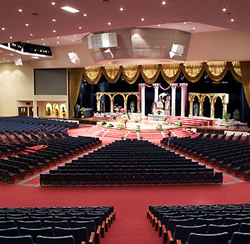
On the other hand, if your console is closer to entry level and your Sunday mix engineer is a volunteer who is helpful and willing but perhaps lacks adequate experience, then it’s time to rethink the “flat” idea.
I own and use a spectrum analyzer, but the work doesn’t start there. It ends there.
First I get rid of feedback using the system EQ. Then I get rid of lingering overtones, and then I do some tonal shaping (again, using the system EQ).
How do I do this? By listening first. When I’ve got the system sounding as good as possible, I then fire up the Real Time Analyzer (RTA) to see what it looks like. I may find a part of the spectrum that is lower than it should be and will tweak it up a bit. Almost always, with very few exceptions, the midrange has to be reduced in relation to the lows and highs because the human ear hears mids more readily, and we need to compensate for that.
Take a listen to a quality recording of a singer you like. Notice how crisp and breathy—yet rich and full—that singer sounds. It doesn’t take a lot of listening to realize that the magical voice you have grown to love has been carefully EQ’d. We have to do the same thing with our sound systems in order to achieve that musical quality, both in speaking and in singing (and of course in all the other sound sources one can find in a church).
Technicians who tune systems by listening sometimes get a bad rap in the pro audio industry. Computers and analysis programs are wonderful tools that help us in the field to achieve better results. There is, however, no computer that will tell you that if the sound is nasal you should reduce 1 kHz just a bit, or that if the sound is too boomy you should get rid of some level at 100 Hz.
If a technician tells you they tune by ear, ask for some references. You may be very pleasantly surprised. The system will be tuned nowhere near flat, but hopefully it will be crisp and articulate without being piercing, as well as rich, warm and full without being muddy or boomy.
Flat is great for home stereos, headphones and interstate highways. In our church sound systems, though, sometimes it’s better with some valleys and hills.
Jon Baumgartner is a veteran system designer for Sound Solutions in Eastern Iowa, a pro audio engineering/contracting division of West Music Company.
